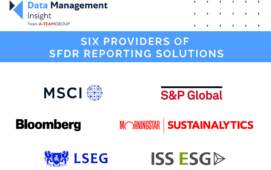By Allan Grody and Bob Carpenter
There is a business model in existence today that has been around for nearly four decades and that has solved the unique identification problem in the global commercial trade supply chain. Now in partnership with our respective firms, we are proposing to share this system with regulators and the financial services industry for solving the same problem in the global financial supply chain.
GS1 has uniquely, unambiguously and universally identified 1.5 million companies and 40 million products across 25 diverse global industries. The same numbers and system, already an ISO sanctioned standard that is used to identify these businesses today are proposed for use as the legal entity identifier (LEI) for the US Treasury’s Office of Financial Research, and the analogous unique counterparty identifier (UCI) for the Commodity Futures Trading Commission (CFTC) and the unique identifier code (UIC) for the Securities and Exchange Commission (SEC).
GS1 operates a federated model with member organisations in 110 countries. The federated model allows for local involvement and, where required, local regulatory oversight. However, it operates its self-registering numbering assignments from a single pool of numbers administered through a distributed data model, thus assuring global uniqueness.
The UK cabinet office’s interest in competing identity assurance services fits well with our proposal to have public auditors apply their assurance function to the LEI and its minimum data attributes. These attributes are quite basic, mainly company name, address, postal code and such. The powerful element is the uniqueness of the number and its mandated global use in reporting data to regulators.
We also see XBRL playing a role in creating templates for the LEI so that it can be “certified” at its source of origination. This is not unlike XBRL’s role in annual report submissions, one of the most successful automation efforts in global regulatory reporting. Coupled with GS1’s success with global identification, also described as one of the more successful business automation efforts ever, the long overdue journey toward resolving the reference data identification issue will be well on its way.
Subscribe to our newsletter




